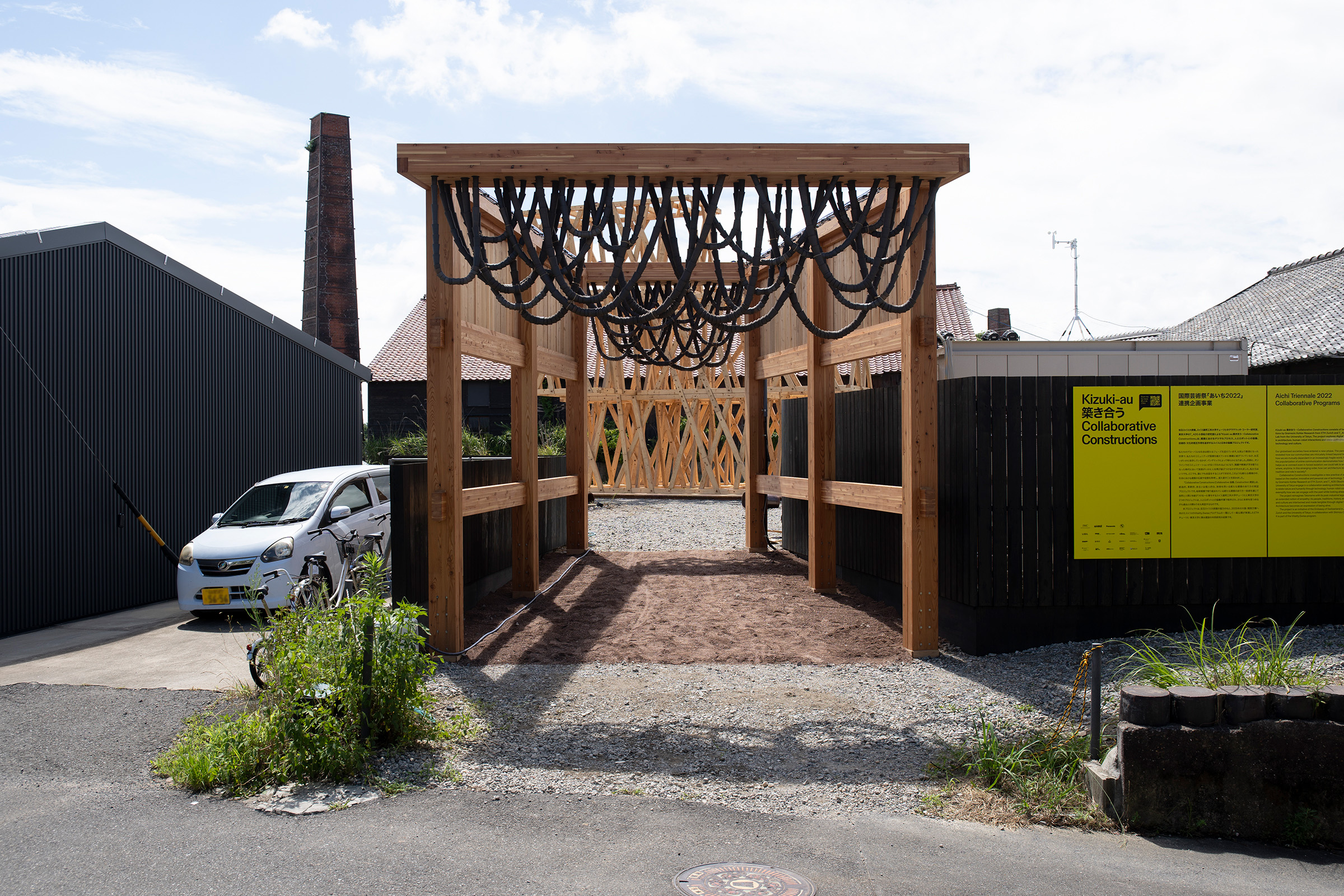
Collaborative Constructions
Kizuki-au、築き合う– Collaborative Constructions
Our globalised societies have entered a new phase. The pandemic has revealed how our communities are intricately linked beyond borders and how mutually dependent we are in an evermore fragile world. Meanwhile, the popularization of online communication demonstrates how technology helps us re-connect even in forced isolation; we could talk to anyone, anywhere, anytime. In this emerging order, how can architecture reimagine its tradition and role in society?
Collaborative Constructions investigates a new practice of architecture based on the creative, innovative and personal use of technology. The projects by Gramazio Kohler Research at ETH Zurich, and T_ADS Obuchi Lab of the University of Tokyo engage in a collaboration seeking architectural strategies to relate nature and humanity through technology; human-robot collaborations exemplify how we can engage with the past while looking ahead.
The project reimagines Tokoname with its post-industrial legacy, through an extended notion of empathy: its people, traditions, history, environment and culture are intertwined and made tangible through digital fabrication. Architecture becomes an expression of being alive.
The project is an initiative of the Embassy of Switzerland in Japan, ETH Zurich and the University of Tokyo, in collaboration with Shimizu Corp. It is part of the Vitality.Swiss program.
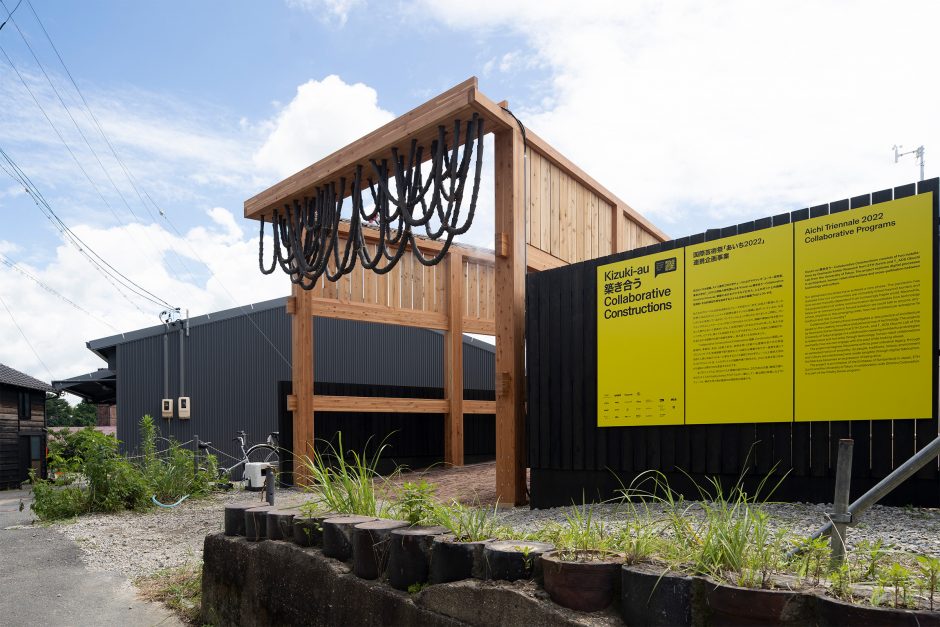
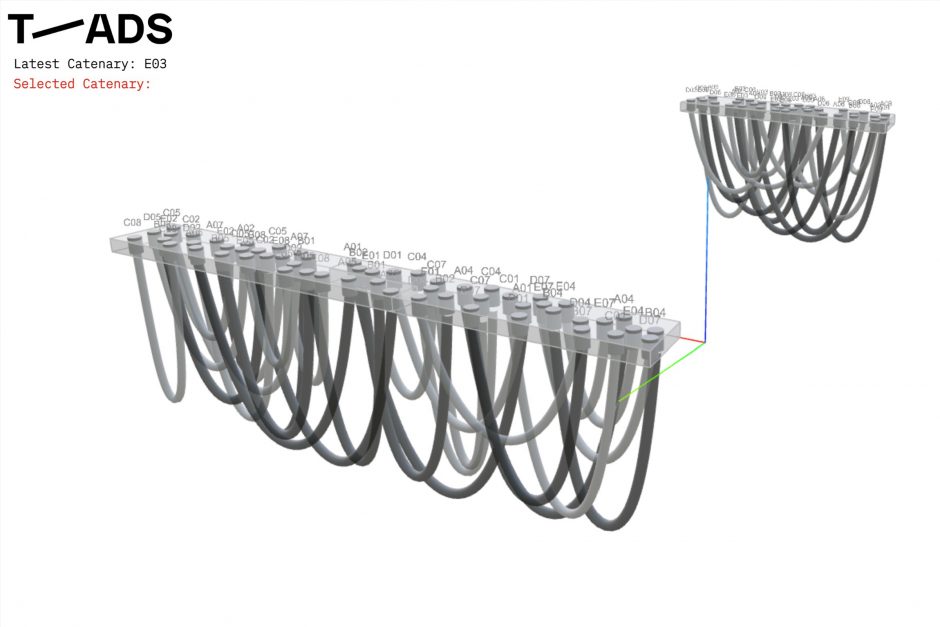
Participatory Shape Generation

Each person makes a uniquely defined shape of pottery chain by holding it with different physiques and strengths reflecting their individuality.
Real-time Optimization
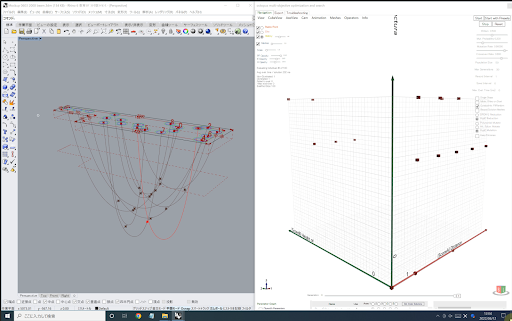
The heart of the project is the fabrication of the hanging pottery chains. While the pattern appears to be random at first glance, its generation requires an intricate algorithm, an algorithm that brings humans and machines together.
Robotic Drilling
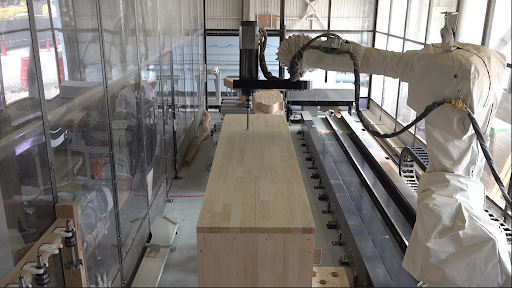
“Collaborative Constructions” combines elements of traditional architectural construction, culture, and natural materials with modern digital technologies such as computational design and robotics fabrication.
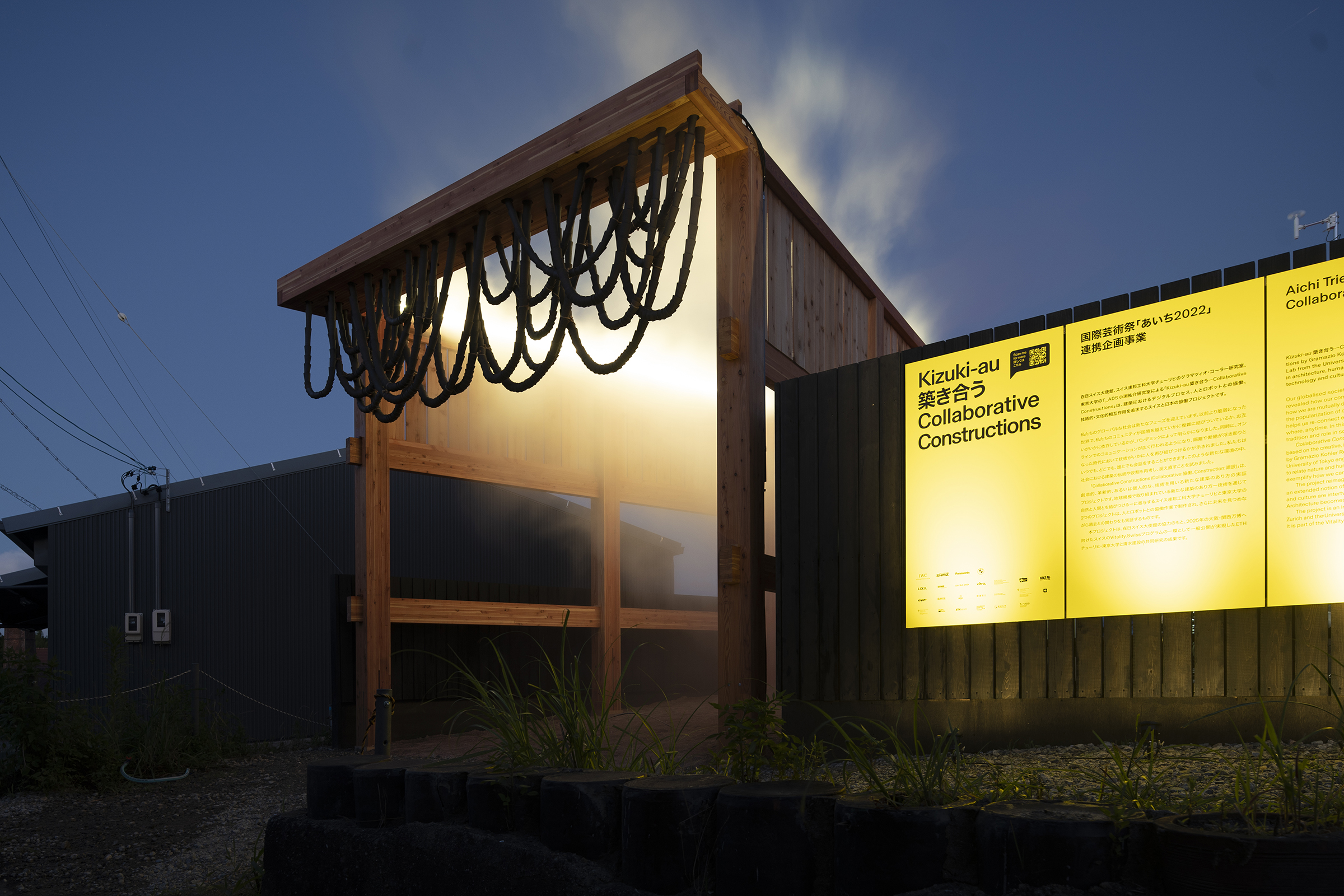
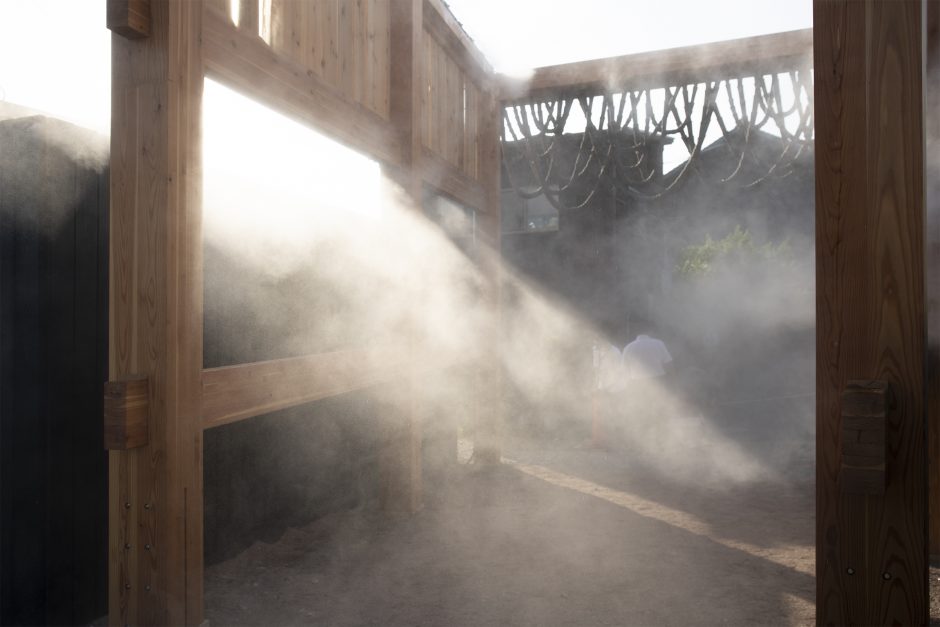
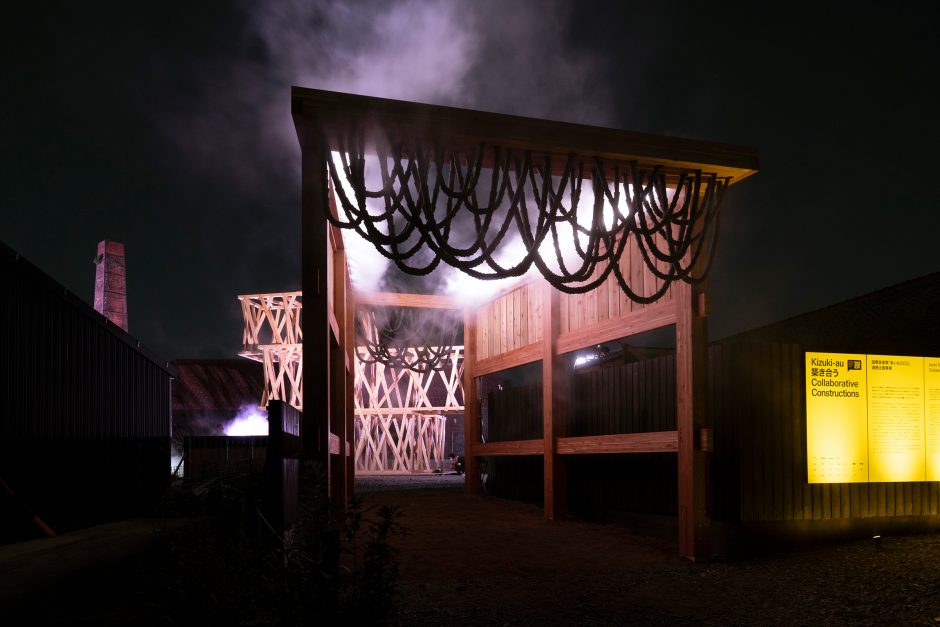
Collaborative Constructions
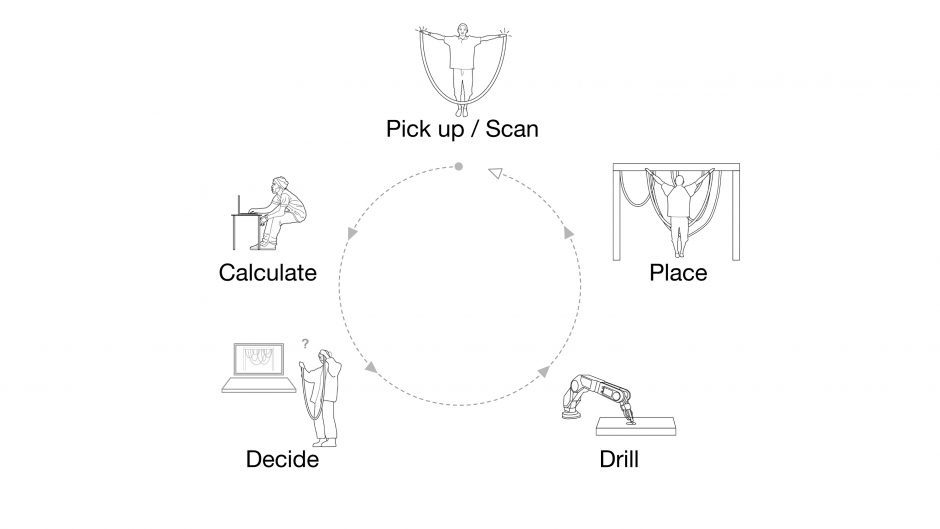
Process Chronology
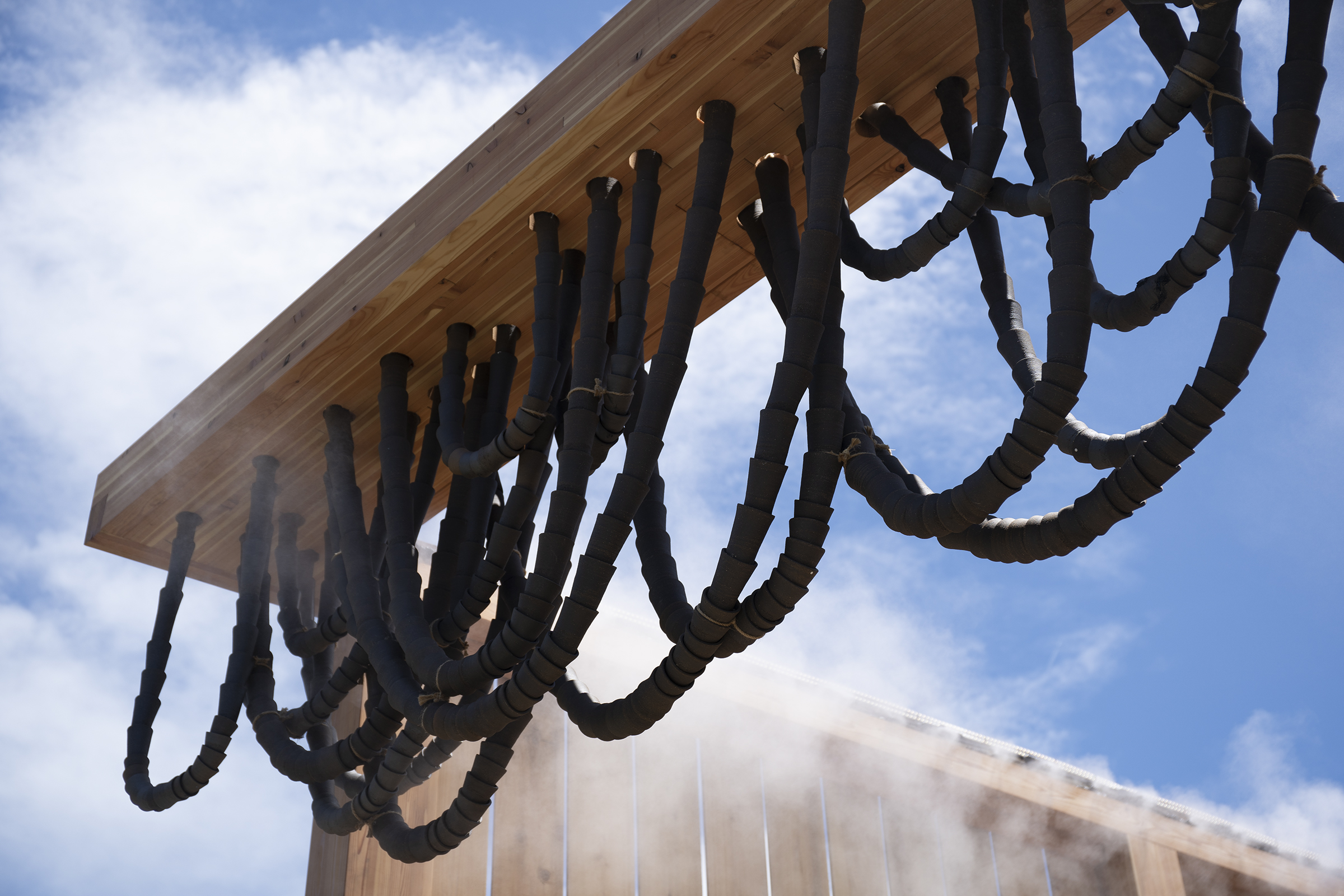
Human Scaled Participatory Shape Generation



The pottery chains are created by a series of feedback processes between a person and a robot. The pottery chains are created by a series of feedback processes between a person and a robot. Sensors are placed on each subject’s hand so that the information-gathering process is as natural as possible.


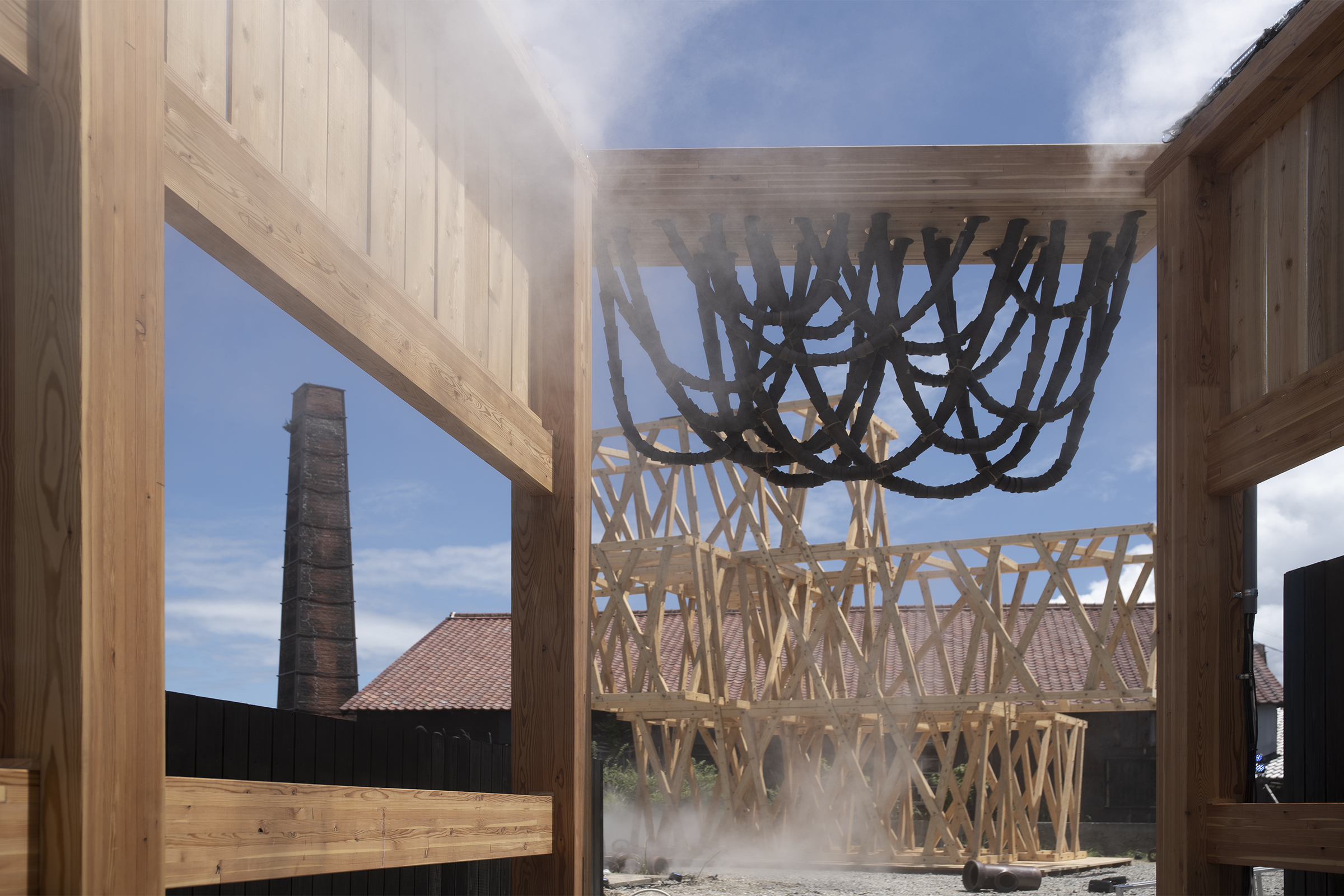
Real-time Optimization Controlling Design Outcome
Optimization Criteria

Tangential Connections
Distance between catenaries should be within a certain domain to avoid intersection, but meanwhile should allow to be tied together.

Intersection Height
Position of connections should be far away enough from the beam to ensure structural stability.

Structural Continuity
Each drilling point should have direct route for force transmission to the edge of the beam.

Human Evaluation / Decision

Searching for Optimized Placement Options

Human Evaluation / Decision

Real-time decisions controlling Design Outcome
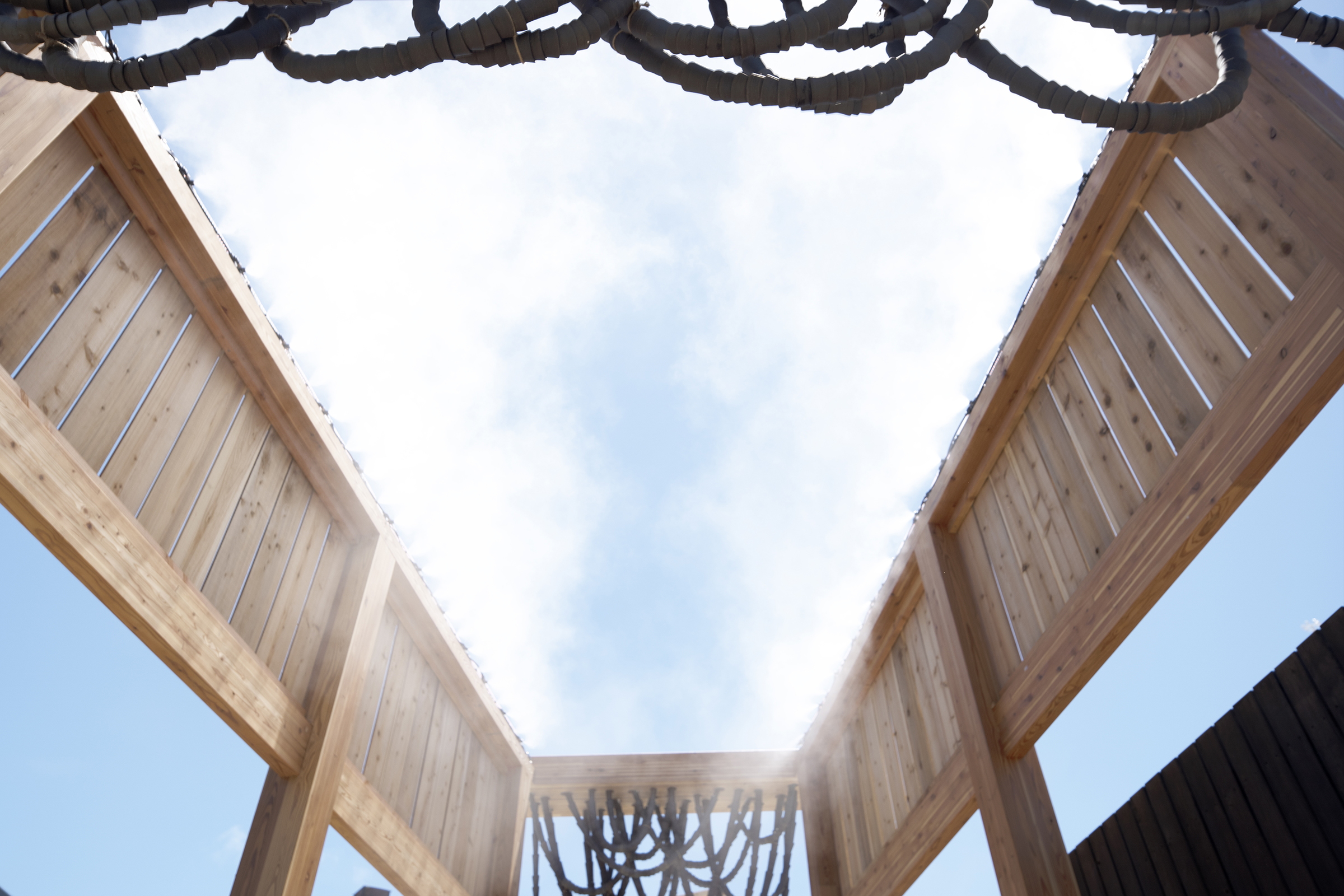
Robotic Drilling and Assembly



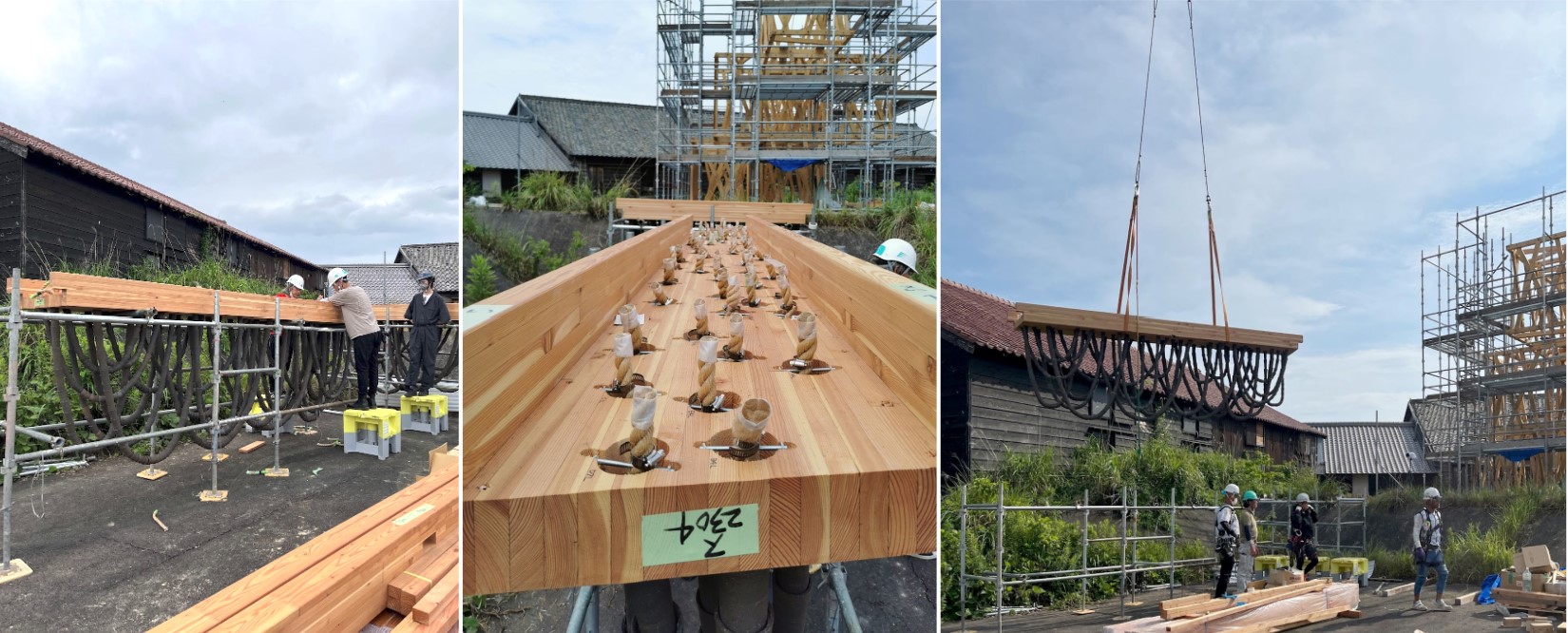
Credits:
University of Tokyo Obuchi Laboratory
Yusuke Obuchi
Shuta Takagi, Yusuke Komate
2021-2022
Alex Orsholits, Zhou Li, Cheng Zhe Zhu, Kritika Dhupar
2020-2021
Alex Orsholits, Annette Choi, Zhou Li
2019-2020
Alex Orsholits, Aungsoe Pyaezone, Boon Hau Lim, Campbell Meredith Argenzio, Dominika Demlova, Hao Li, Ke Zhou, Surjyatapa Ray Choudhury, Yiyuan Qian, Yucheng Zeng, Annette Choi, Zhou Li
Digital Fabrication Research Collaborator:
Shimizu Corporation Construction Technology Division
Construction:
Shimizu Corporation
Mist Design:
Panasonic Holdings Corporation
Manufacturing Innovation Division
Structural Design:
University of Tokyo Jun Sato Laboratory
Pottery Production Advisor:
LIXIL Corporation
INAX Museums Cultural Promotion Department
Pottery Artist:
Daisuke Tominoto, Sachiko Iketani
